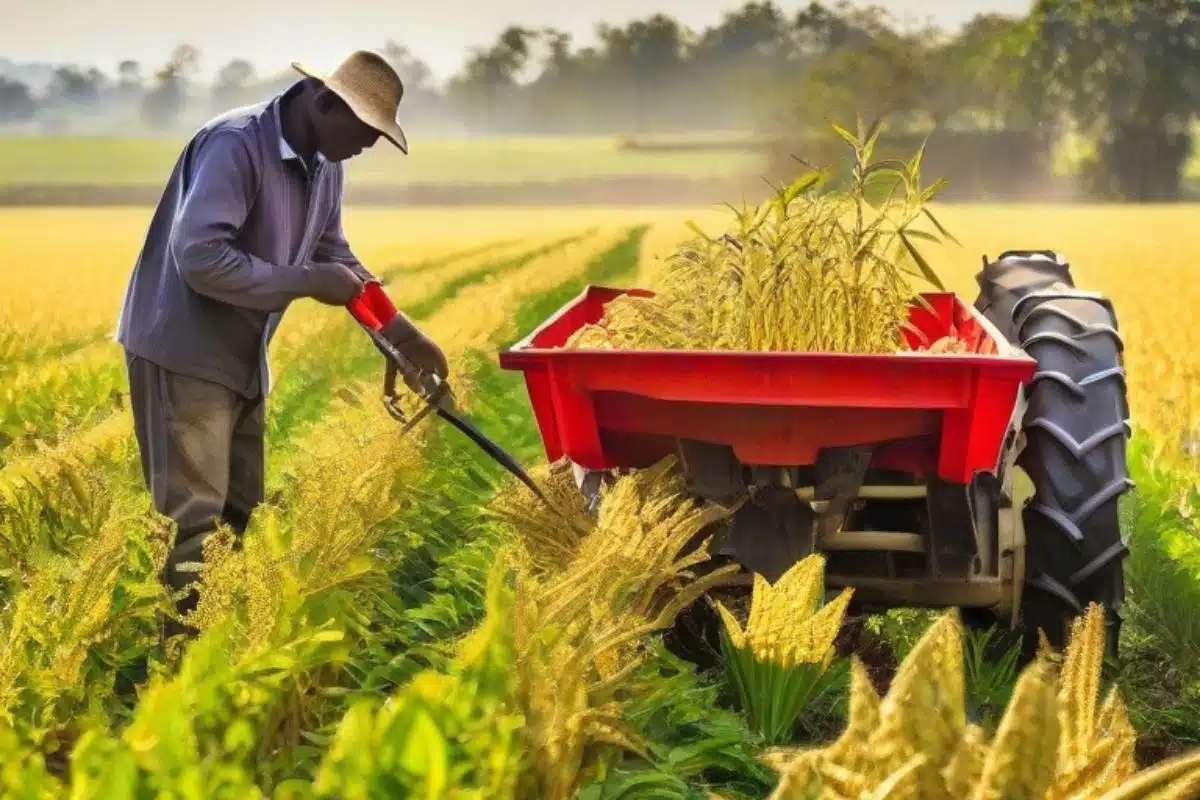In modern agriculture, achieving high crop yields is essential for ensuring food security and sustaining the livelihoods of farmers. Agrochemicals, when used responsibly, play a critical role in enhancing crop productivity, protecting plants from pests, and improving soil health. These chemicals include fertilizers, pesticides, herbicides, and fungicides, all designed to address the various challenges faced by farmers.
This article will explore the top 10 essential agrochemicals that are crucial for boosting crop yields in today’s agriculture. By understanding the function and benefits of each, farmers can make informed decisions to improve their crop performance and sustainability.
Contents
- Nitrogen-Based Fertilizers
- Phosphorus Fertilizers
- Potassium Fertilizers
- Herbicides
- Insecticides
- Fungicides
- Micronutrient Fertilizers
- Soil Conditioners
- Growth Regulators
- Adjuvants
Nitrogen-Based Fertilizers
Nitrogen is one of the most important nutrients for plant growth. Nitrogen-based fertilizers like urea and ammonium nitrate provide crops with the essential nitrogen needed for the development of leaves and stems. These fertilizers enhance photosynthesis and are vital for the rapid growth of crops such as maize, wheat, and rice.
Key Benefits:
- Improves vegetative growth.
- Increases chlorophyll production for efficient energy conversion.
Phosphorus Fertilizers
Phosphorus-based fertilizers, such as superphosphate and diammonium phosphate (DAP), support root development and increase the overall strength of plants. Phosphorus is essential for energy transfer and photosynthesis, which are crucial for flowering and fruiting stages.
Key Benefits:
- Promotes strong root systems.
- Enhances flowering and fruit production.
Potassium Fertilizers
Potassium is vital for the overall health of the plant, improving resistance to diseases and stress. Fertilizers such as potassium chloride and potassium sulfate help regulate water uptake, activate enzymes, and support the transport of nutrients within the plant.
Key Benefits:
- Increases drought resistance.
- Enhances crop quality and yield.
Herbicides
Weeds compete with crops for nutrients, water, and sunlight, reducing overall yield. Herbicides like glyphosate and atrazine are widely used to control unwanted plants and grasses in the field. Pre-emergence and post-emergence herbicides ensure that crops grow without competition.
Key Benefits:
- Reduces weed competition.
- Saves time and labor on manual weeding.
Insecticides
Insects can severely damage crops by feeding on leaves, stems, and roots. Insecticides like chlorpyrifos, neonicotinoids, and pyrethroids are essential for controlling insect populations. These chemicals protect plants from pests such as aphids, beetles, and caterpillars, which can cause substantial yield losses.
Key Benefits:
- Protects crops from pest infestations.
- Enhances crop vigor and yield potential.
Fungicides
Fungal diseases can devastate crops, reducing yields and quality. Fungicides like mancozeb, triazoles, and copper-based fungicides are essential for preventing and controlling diseases like blight, rust, and mildew. Fungicides play a critical role in maintaining healthy crops.
Key Benefits:
- Prevents fungal infections.
- Increases crop longevity and harvest quality.
Micronutrient Fertilizers
While macronutrients like nitrogen, phosphorus, and potassium are vital, plants also require trace elements or micronutrients such as zinc, iron, manganese, and boron. These micronutrients are often delivered through fertilizers that ensure balanced nutrition for optimal plant health.
Key Benefits:
- Corrects nutrient deficiencies.
- Promotes healthier plants and improved yields.
Soil Conditioners
Soil health is fundamental to crop productivity. Gypsum and lime are commonly used soil conditioners that improve soil structure, pH balance, and water retention. Healthy soil promotes better root growth and nutrient uptake, ultimately improving crop yields.
Key Benefits:
- Enhances soil fertility and structure.
- Balances soil pH for better nutrient availability.
Growth Regulators
Plant growth regulators (PGRs), such as ethylene inhibitors and gibberellins, help control the growth patterns of plants. These chemicals can stimulate or inhibit specific growth processes, such as seed germination, fruit development, or stress resistance. PGRs are especially useful in managing plant height and improving crop uniformity.
Key Benefits:
- Controls plant growth for uniformity.
- Improves fruit set and development.
Adjuvants
Adjuvants are chemicals added to agrochemical sprays to improve their effectiveness. They enhance the adhesion, spread, and penetration of pesticides and fertilizers, ensuring that they reach their target more efficiently. Common adjuvants include surfactants, stickers, and wetting agents.
Key Benefits:
- Increases agrochemical efficacy.
- Reduces runoff and environmental waste.
Conclusion
The careful and strategic use of agrochemicals is essential for boosting crop yields and ensuring the success of modern agriculture. While each agrochemical serves a specific purpose, their combined use can significantly improve productivity, protect crops from threats, and optimize nutrient uptake.
By understanding the role of these top 10 essential agrochemicals, farmers can develop more effective crop management plans, enhancing both the quality and quantity of their harvests. Responsible use of these chemicals is key to sustainable agriculture, ensuring that future generations can continue to benefit from healthy, high-yielding crops.

